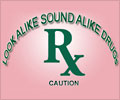
The study looked at both procedural (e.g., incomplete, unclear medication orders) and clinical (e.g., wrong dose, wrong drug) orders, and rated the severity of the errors (minor to serious). The researchers found that on the three intervention wards where an e-prescribing system was implemented the procedural prescribing error rates fell by over 90%.
The researchers found that serious clinical errors declined significantly by 44% on the three wards that used the e-prescribing system whereas the serious clinical error rate fell by 16.7% in control wards that did not get the system.
The overall rate of clinical errors (those rated as minor to serious combined) did not fall due to the fact that the e-prescribing systems unwittingly introduced some new types of errors called "system-related errors." These included, for example, when a prescriber accidently selected the wrong drug from a drop-down menu item. These system-related errors accounted for 35% of errors occurring in the intervention wards.
These findings are important as medication errors using hand-written scripts (for example, prescribing the wrong drug or giving a drug by the wrong route), frequently occur in health-care settings and are responsible for thousands of deaths every year.
The authors admit that the study has limitations, such as the lack of randomization and lack of control wards in Hospital B, but conclude: "Implementation of these commercial e-prescribing systems resulted in significant reductions in prescribing error rates with a significant decline in serious errors observed."
Advertisement
The authors add: "Importantly, the results highlight the need to continually monitor and refine the design of these systems to increase their capacity to improve both the safety and appropriateness of medication use in hospitals."
Advertisement











